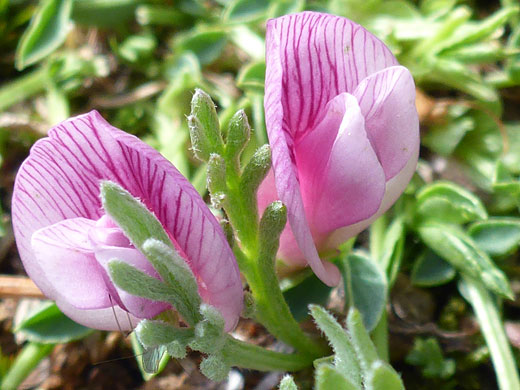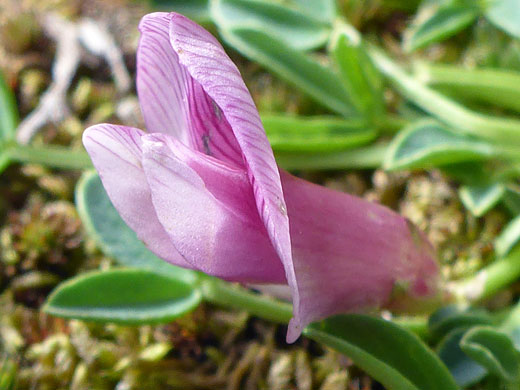Common name:
Dwarf clover
Family:
Scientific name:
Trifolium nanum
Main flower color:
Range:
All the Rocky Mountain states, except Idaho
Height:
One inch
Habitat:
Tundra and rocky outcrops, from 10,500 to 14,000 feet
Leaves:
Divided into 3 oblanceolate leaflets, up to 0.3 inches long
Season:
June to August
Like many high elevation species, trifolium nanum is a low-growing plant, forming rounded mats one foot or more in diameter but only an inch or so high. All plant parts are hairless. The leaflets are small, relatively thick, lined by fine edge teeth - more noticeable towards the apex, and attached by relatively long stalks, lying along the ground. Leaflets are often partly folded up along the midvein. At the base of the stalk is a pair of lanceolate stipules.
The short stems bear between one and four (usually one or two) flowers, significantly longer than the leaves; up to 0.8 inches. Flowers are supported by a five-lobed calyx, the lobes triangular, and shorter than the calyx tube. Petals are colored white to dark pink to reddish, crossed by darker vertical lines, especially the wide banner petal, which is curved back by around 45 degrees.
The short stems bear between one and four (usually one or two) flowers, significantly longer than the leaves; up to 0.8 inches. Flowers are supported by a five-lobed calyx, the lobes triangular, and shorter than the calyx tube. Petals are colored white to dark pink to reddish, crossed by darker vertical lines, especially the wide banner petal, which is curved back by around 45 degrees.
All Contents © Copyright The American Southwest | Comments and Questions | Contribute | Site Map




